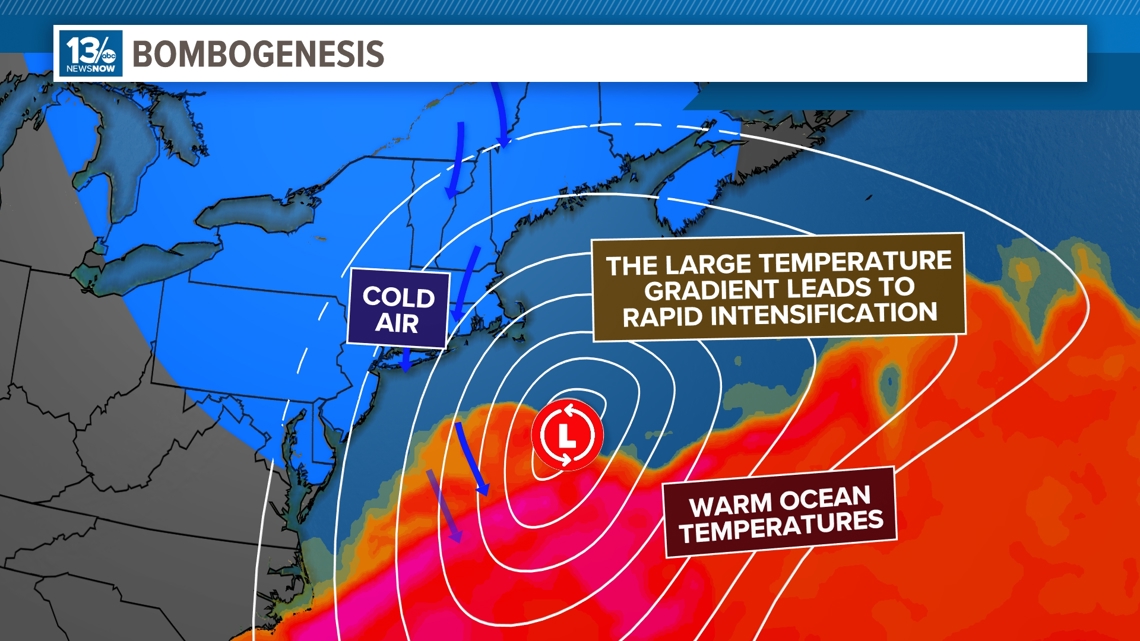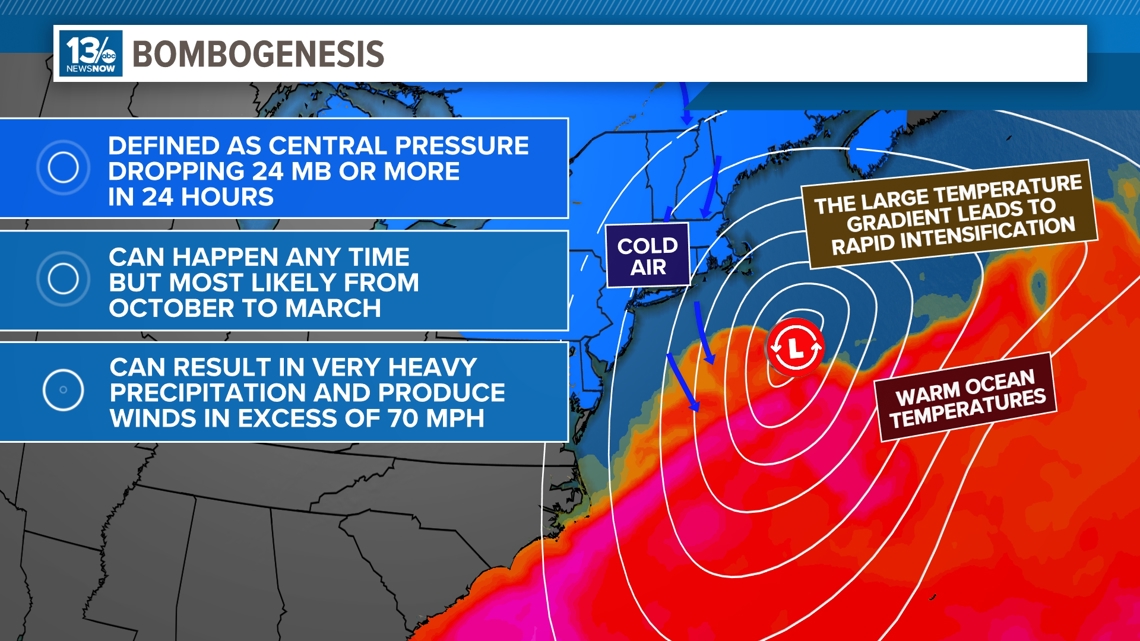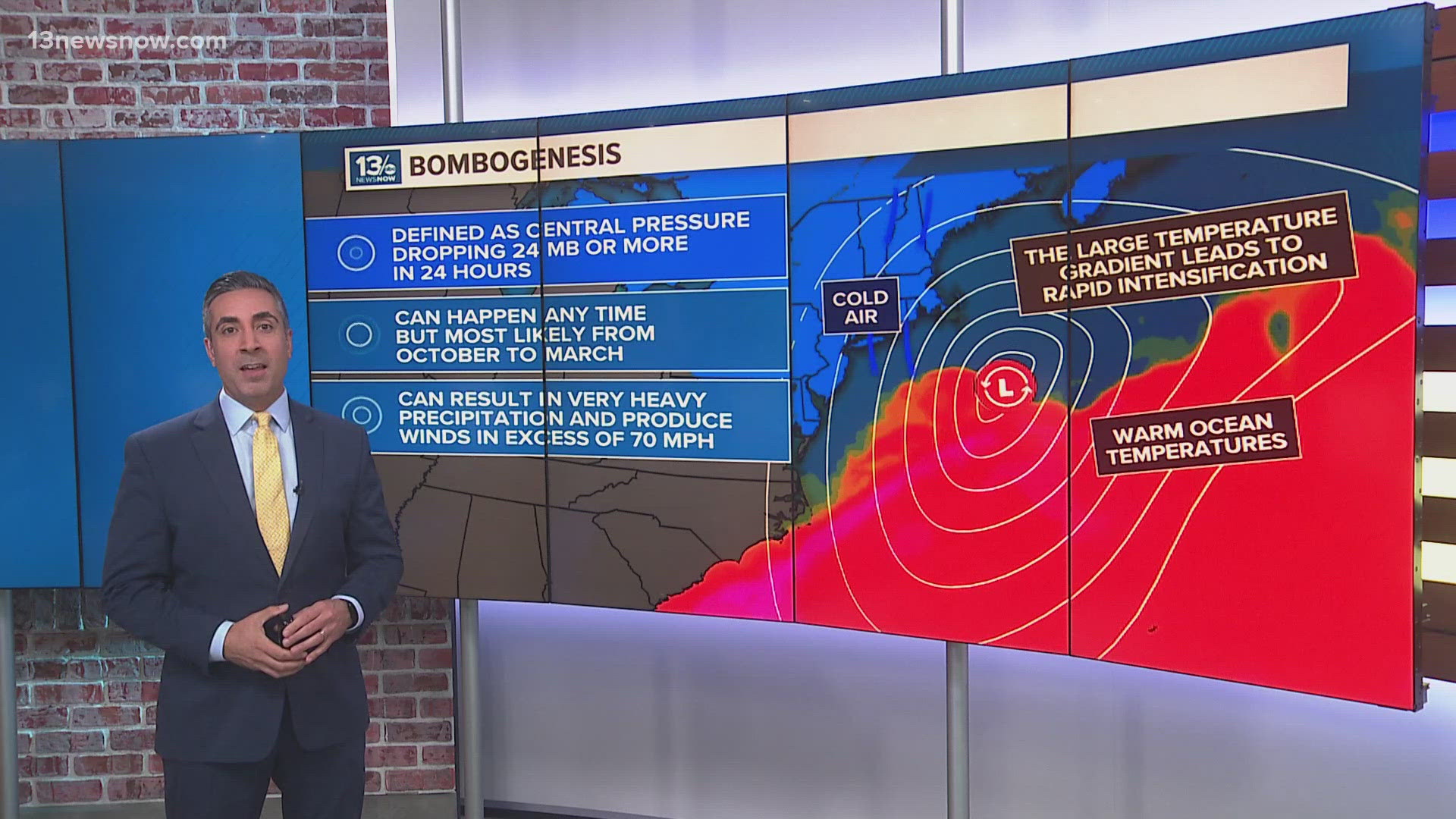NORFOLK, Va. — Bombogenesis is one of the more fun meteorological terms that we get to throw around as scientists talking about storms. But when you hear that word, what exactly does it mean?
We see this term looped in a lot of the time with developing Nor’easters that lead to New England blizzards in the wintertime. A large temperature gradient leads to the storm undergoing rapid intensification. The storm is pulling in cold air from the north which is interacting with still warm ocean temperatures. This gradient drives the storm to deepen and intensify.


The buzzword that you’ve probably heard is ‘Bomb Cyclone,’ which is a storm that has or is currently undergone bombogenesis or rapid intensification.
Not just any storm can garner the title bomb cyclone, there are criteria that must be satisfied first.


The storm’s central pressure must deepen or drop 24 millibars or more in 24 hours’ time. When this occurs, you can bet that the storm will be impactful. These storms are capable of very heavy rain or snow and can be accompanied by nearly hurricane-force wind gusts.
Bomb Cyclones are not unique to any one of time of year, however, they seem to be most common from October through March, the winter months.
These storms are also becoming a bit more frequent thanks to warmer ocean temperatures lingering later into the winter, clashing with intense arctic cold outbreaks.
Bomb Cyclones can be quite fascinating to watch evolve just off our coasts in Hampton Roads and have been responsible for some of our more impactful winter storms locally.

